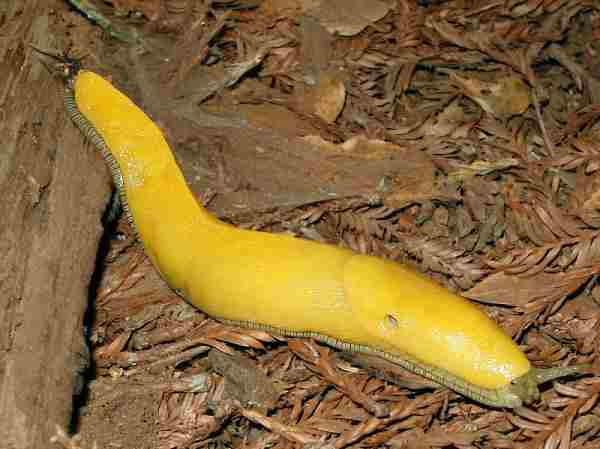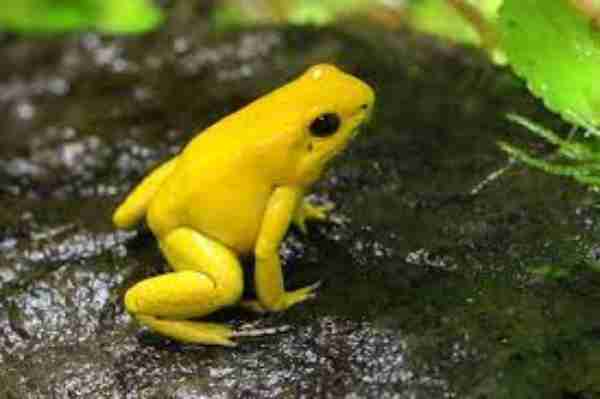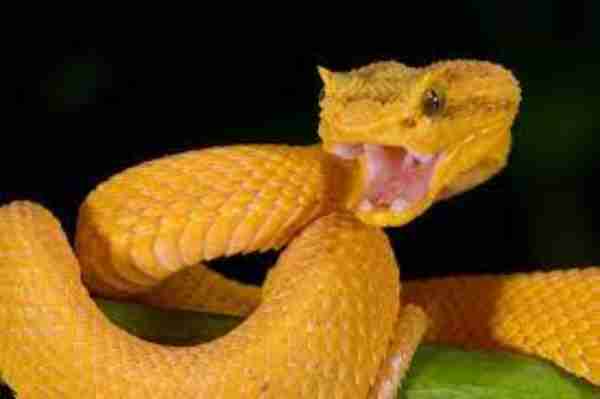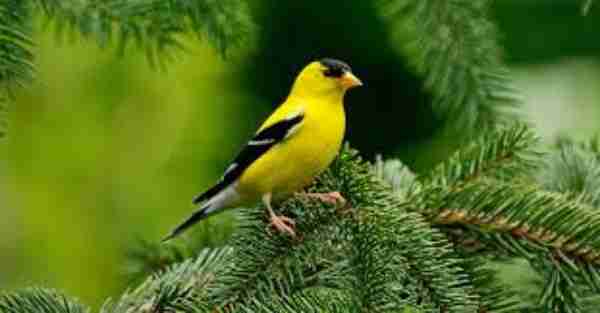Encountering Animals That Are Yellow in our daily lives is an exceptionally uncommon occurrence. It could be attributed to the fact that the majority of these magnificent beings, adorned with this captivating and vibrant hue, primarily inhabit the untamed wilderness rather than our domesticated surroundings.
Table of Contents
However, for those who embrace adventure, chances are you may encounter some of these remarkable creatures at least once in your lifetime, if not more frequently.
Yet, it is important to note that the purpose of their golden shades extends beyond mere aesthetics or attracting mates. In fact, a significant number of these animals utilize their yellow colouration as a warning signal to potential predators, indicating their venomous nature, or as a means of blending into their surroundings while stealthily hunting their prey.
For these incredible creatures, their distinct colour serves a far greater purpose, contributing to their very survival. Without further ado, let us embark on a fascinating journey as we explore the top 10 most breathtaking yellow animals.
1. Goldenrod Crab Spider (Misumena vatia)

Found exclusively in habitats across the northern hemisphere, the golden crab spider stands out as one of the most intriguing yellow animals discussed in this article. While it may seem like a bold statement, the following unique characteristics of this arachnid will demonstrate its fascinating nature.
First and foremost, unlike many other spiders, the golden crab spider (M. vatia) does not rely on spinning webs to capture prey. Instead, it strategically positions itself on yellow or white flowers, such as the goldenrod flower from which it derives its name. Using its colouration as camouflage, the spider awaits its prey and injects a potent venom once the unsuspecting creature is within striking range.
Secondly, female golden crab spiders employ their webs solely for reproductive purposes. They create protective cocoons made of webbing and nest leaves to safeguard their eggs from potential predators. The female spider diligently tends to the nest until the eggs hatch, after which she typically succumbs.
A distinctive trait of these spiders is their crab-like movement. They possess the ability to walk sideways, forwards, and backwards, reminiscent of the locomotion seen in crabs, hence their apt moniker as crab spiders.
Golden crab spiders have a modest size, reaching a maximum length of 10mm. Although they possess venom, they do not pose a threat to humans due to the weakness of their venom, which is insufficient to harm larger animals, and their fangs are unable to penetrate human skin.
Furthermore, it’s important to note that crab spiders do not always display a yellow hue. Their colouration alternates between yellow and white to blend in with their surroundings, as they typically inhabit daisies and goldenrod flowers, which are predominantly white and yellow in colour.
2. Eurasian Golden Oriole (Oriolus oriolus)

The Eurasian golden oriole, a timid songbird, derives its name from the habitats it prefers during the spring and summer seasons. While these birds migrate across the Mediterranean to Central and South Africa for the winter, they establish breeding grounds spanning from Western Europe and Scandinavia to China and East Asia during the warmer months.
In this region, they are commonly observed in open plantations, orchards, and coniferous forests. As they migrate south in autumn, they can be found in wet woodlands, savannahs, and riverine forests throughout Sub-Saharan Africa. With an omnivorous diet, they primarily consume insects, fruits, seeds, and nectar.
Despite their vibrant plumage, spotting these birds in trees can be challenging due to their secretive nature. However, their distinct bird songs give away their presence. The Eurasian golden oriole displays a golden-yellow body with contrasting black wings and a red beak. Females of this species have a more greenish hue with whitish-yellow underbellies.
These orioles form monogamous pairs and establish lasting bonds with their mates. Both males and females contribute to nest building, incubating eggs, and caring for their offspring. The eggs hatch within two weeks, and adult birds can reach a size of up to 25cm. They have an average lifespan of approximately 10 years.
3. The 22-Spot Ladybird (Psyllobora vigintiduopunctata)

The 22-spot ladybird, a small beetle native to the UK and Western Europe, is named for the precisely twenty-two black spots on its wing cases. Additionally, it has 4-5 dark spots on its head, known as the protonum. Some argue that it should be called the 26-spot ladybird due to these additional spots on its head. However, its distinct number of dark spots distinguishes it from other ladybird species.
Measuring only 3 to 5mm in length, the 22-spot ladybird is commonly found in the UK and various countries across Western Europe. It tends to inhabit areas with low-growing vegetation such as gardens and meadows, where it feeds on mildew and other fungi. This unique feeding behaviour sets it apart from other ladybird species, which typically prefer habitats with tall grasses and flowers, where they can consume nectar, honey, aphids, and small insects.
4. Yellow Tang (Zebrasoma flavescens)

The Yellow Tang, a species of fish, is indigenous to the shallow tropical reefs of the Pacific Ocean. These yellow creatures can be found in the coastal waters of Hawaii, Japan, and various island nations throughout the southern Pacific.
There have been occasional sightings of yellow tangs along the Florida coastline, despite it not being their native habitat. An adult yellow tang typically grows up to 20cm in length and 2cm in thickness, and it can live up to 30 years in its natural environment. However, when kept in captivity, their lifespan is shortened to about 5 to 10 years.
Due to their long lifespan and vibrant yellow colouration, yellow tangs are highly sought after for aquariums worldwide. Interestingly, these fish do not exhibit their vibrant colours constantly. During the daytime, they appear bright yellow, but their colour fades to a greyish yellow with white lateral stripes at night.
Furthermore, yellow tangs are sensitive to the lunar cycle and only spawn their eggs during a full moon. In their natural habitat, they are primarily herbivorous, feeding on algae and other plant matter. However, in captivity, they are often fed diets that include meat and fish-based foods. There is some debate about the effectiveness of this diet, as yellow tangs fed on animal-based diets in aquariums may gradually lose their bright colours over time.
5. Banana Slug (Ariolimax californicus)

Resembling a ripe banana in shape and form, the banana slug is a mollusc that derives its name from this striking resemblance. These slugs are native to the North American Pacific Coast, inhabiting the dense forest floors spanning from Alaska to central California. In terms of size, they rank as the second largest land slug species, growing up to 10 inches in length and weighing over 4 ounces.
Banana slugs possess both male and female reproductive organs, making them hermaphrodites. While they have the capability to self-fertilize, they also engage in mating with other individuals of their species.
One of the notable characteristics of banana slugs is the production of a highly potent slime that covers their bodies. This slime serves multiple purposes: it helps them maintain moisture and prevent dehydration, aids in their movement by allowing them to glide across the forest floor and acts as a protective barrier against predators. The slime possesses a numbing effect that can temporarily numb the tongues of predators attempting to consume them.
Due to the unique properties of their slime, scientists have explored its potential as an alternative surgical adhesive that can effectively bond to bloody tissue.
Interestingly, the banana slug holds the distinction of being the official mascot of the University of Santa Cruz, California.
6. Golden Poison Frog (Phyllobates terribilis)

Not all that glimmers in yellow is safe, and the presence of the second highly toxic yellow animal on this list further reinforces this notion. The golden poison frog, also known as the golden dart frog or poison arrow frog, utilizes its vibrant colours as a warning to potential predators rather than an attraction for prey. This amphibian is endemic solely to the rainforests and Pacific coasts of Colombia. It thrives in arboreal habitats with temperate climates and high humidity levels.
Despite its small size, measuring only 1-2 inches, the golden poison frog is one of the most venomous creatures on the planet. It secretes a potent toxin called batrachotoxin from its skin. A mere milligram of this poison can be lethal to up to twenty humans, and even handling the frog barehanded can put one’s life in serious danger.
Interestingly, the poison dart frog does not produce these deadly toxins on its own. It acquires powerful toxic alkaloids by consuming venomous insects and small creatures.
Regrettably, due to its restricted habitat range, this species is classified as endangered. However, conservation efforts are underway to reverse the decline in their population and ensure their survival.
7. Yellow Seahorse (Hippocampus kuda)

Referred to as the estuary seahorse or common seahorse, the yellow seahorse stands out as one of the most abundant creatures on this list. Scientifically known as H. kuda, it can be found in more than 23 countries across various regions, including South Africa, Australia, Japan, and numerous Southeast Asian countries. Its preferred habitats include estuaries, harbours, lagoons, seagrass beds, and shallow waters of the Pacific Ocean.
Yellow seahorses are known for their monogamous behaviour, engaging in elaborate courtship rituals before mating. What makes them even more remarkable is their unique reproductive system, in which the males bear the young during gestation.
Due to their adaptability to slow-moving currents and varying environmental conditions, common seahorses are popular inhabitants of aquariums. However, it’s important to note that the yellow seahorse is considered a vulnerable species, despite still having significant populations in Australia and Indonesia.
The decline in their numbers can be attributed primarily to hunting and unintentional capture during shrimp trawl fishing, leading to bycatch. Efforts are needed to ensure the preservation and protection of this fascinating marine species.
8. Eyelash Viper (Bothriechis schlegelii)

Named for its distinctive scales above the eyes resembling eyelashes, the Eyelash Viper is a venomous pit viper commonly found in the lush and tropical forests of North, South, and Central America. Its habitat stretches from Mexico to Panama, Colombia, and Peru.
With a length ranging from 60 to 85cm, this snake prefers to inhabit trees with dense foliage, allowing it to blend seamlessly with its surroundings and lie in wait for prey. Small birds, frogs, rodents, and other mammals make up its unsuspecting victims.
The Eyelash Viper is primarily active at night, displaying nocturnal behaviour. It is also one of the few snake species that reproduce through an ovoviviparous method. The females carry the eggs internally for approximately six months before giving birth to live snakelets that resemble miniature adults.
However, don’t be deceived by the attractive colours of this yellow creature if you happen to encounter an Eyelash Viper. Its venom is highly dangerous, containing potent hemotoxic and neurotoxic properties that can have severe effects on the cardiovascular and central nervous systems, even in humans.
9. Galapagos Land Iguana (Conolophus subcristatus)

Found exclusively on the volcanic islands of the Galapagos in Ecuador, the Galapagos land iguana is a unique reptile species and one of the four iguana species endemic to this region.
Distinguishing the male land iguana from other iguana species is relatively easy due to its yellow skin, which may exhibit black, brown, and white markings.
These iguanas reach sexual maturity only after 8 to 15 years and can live for approximately 60 to 70 years.
Being ectothermic creatures, the Galapagos land iguanas spend a significant portion of their days sunbathing on volcanic rocks, absorbing warmth. To conserve body heat, they retreat into burrows during the night.
Due to the limited availability of fresh water on the islands, the land iguana relies heavily on obtaining water from their diet, particularly from consuming prickly pear cactus, which forms a significant part of their food source.
While primarily herbivorous, the land iguana may display opportunistic carnivorous behaviour by consuming small centipedes and scavenging carrion if the opportunity presents itself.
10. The American Goldfinch (Spinus tristis)

The American goldfinch, primarily a herbivorous feeder, is a migratory bird that predominantly inhabits gardens, floodplains, and weedy fields across North America.
During the winter season, these birds embark on extensive journeys across the North American continent, seeking warmer climates in southern Canada and parts of Mexico, where they can find open fields abundant with seeds and nuts to sustain themselves.
The migratory behaviour of the goldfinch is closely tied to the changing seasons, as their plumage undergoes remarkable transformations. From spring through summer, they sport vibrant yellow feathers adorned with black patches, only to moult and reveal an olive-green plumage during the winter months.
This colour adaptation serves multiple purposes. The bright yellow plumage helps attract potential mates during the breeding season, while the transition to a more subdued olive-green hue in winter acts as a form of camouflage, making them less conspicuous to predators.
Furthermore, the goldfinch possesses a distinct flight pattern characterized by undulating movements, often resembling a zigzag pattern. This flight behaviour becomes particularly noticeable during their courtship rituals when they are attempting to impress potential mates.
Reference:
- https://animalia.bio/collections/bright-yellow-animals
- https://www.ncbi.nlm.nih.gov/pmc/articles/PMC2265484/
- https://www.livescience.com/27336-giraffes.htm

Jeevan Kodiyan
An animal enthusiast with an interest in zoology, studying the behavior and activities of animals in the wild habitat. I work on research projects related to species conservation and endangered species protection. I also leverage zoology to become an educator, educating others about the importance of protecting our natural environment and the beauty of animals in their natural habitats.









